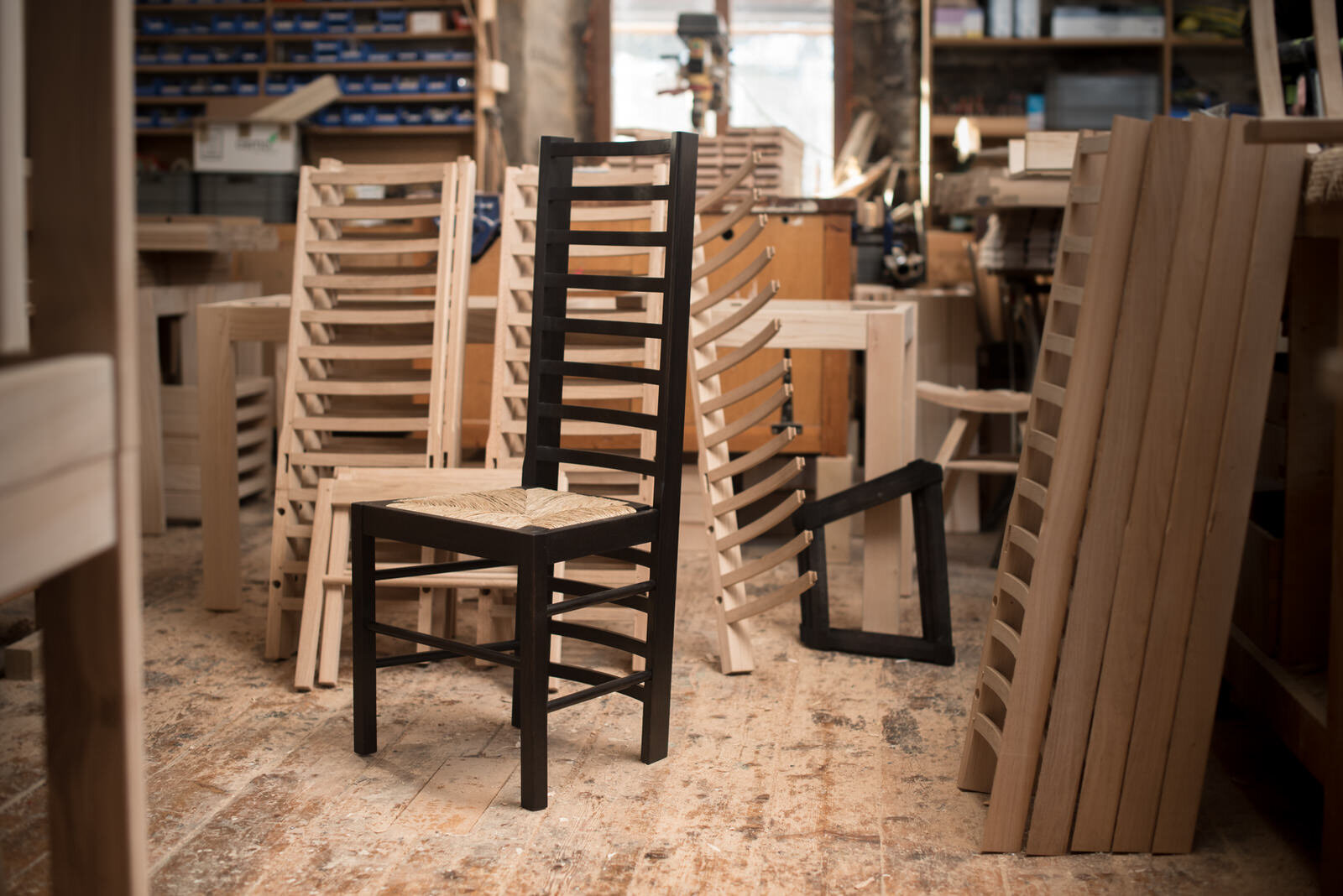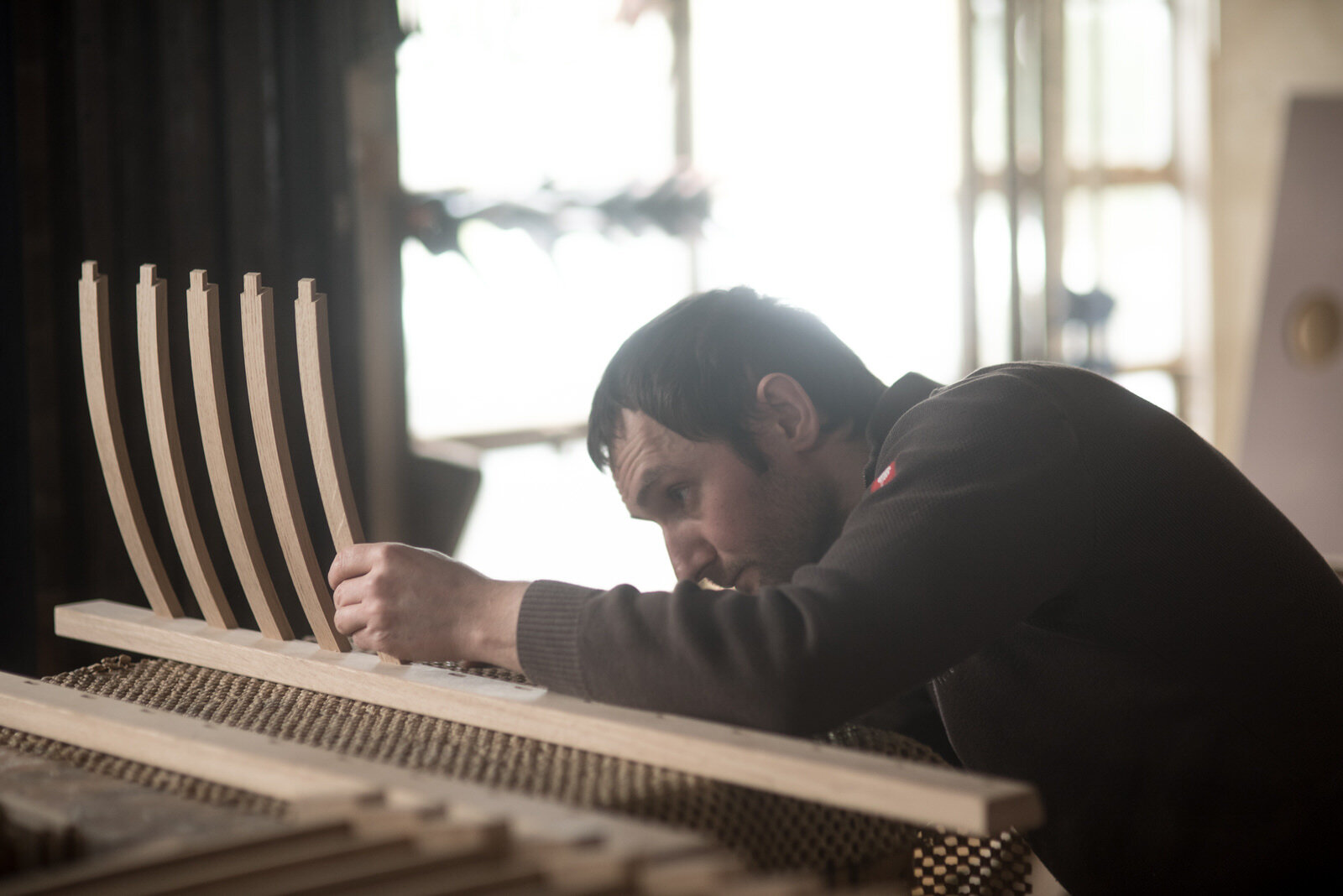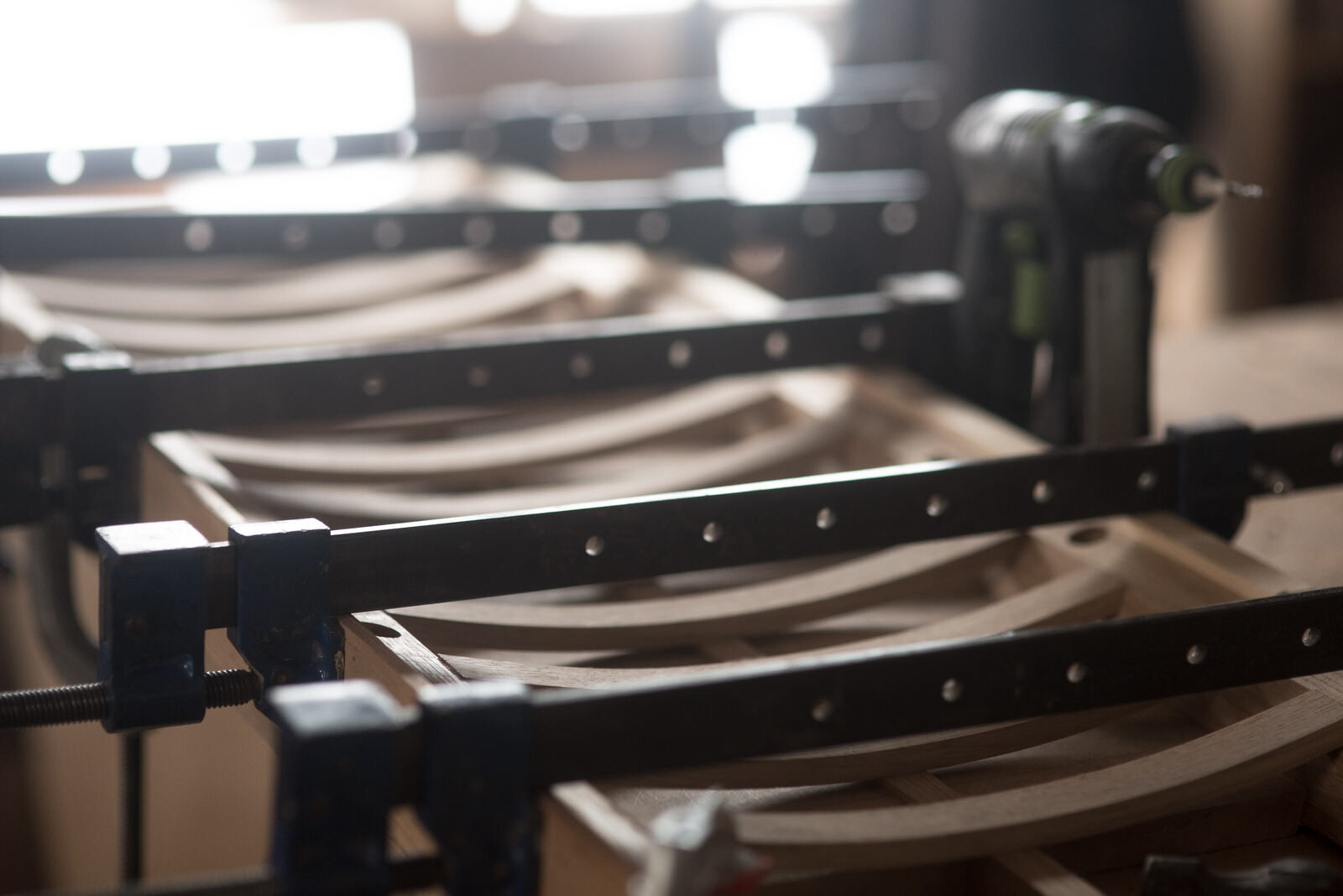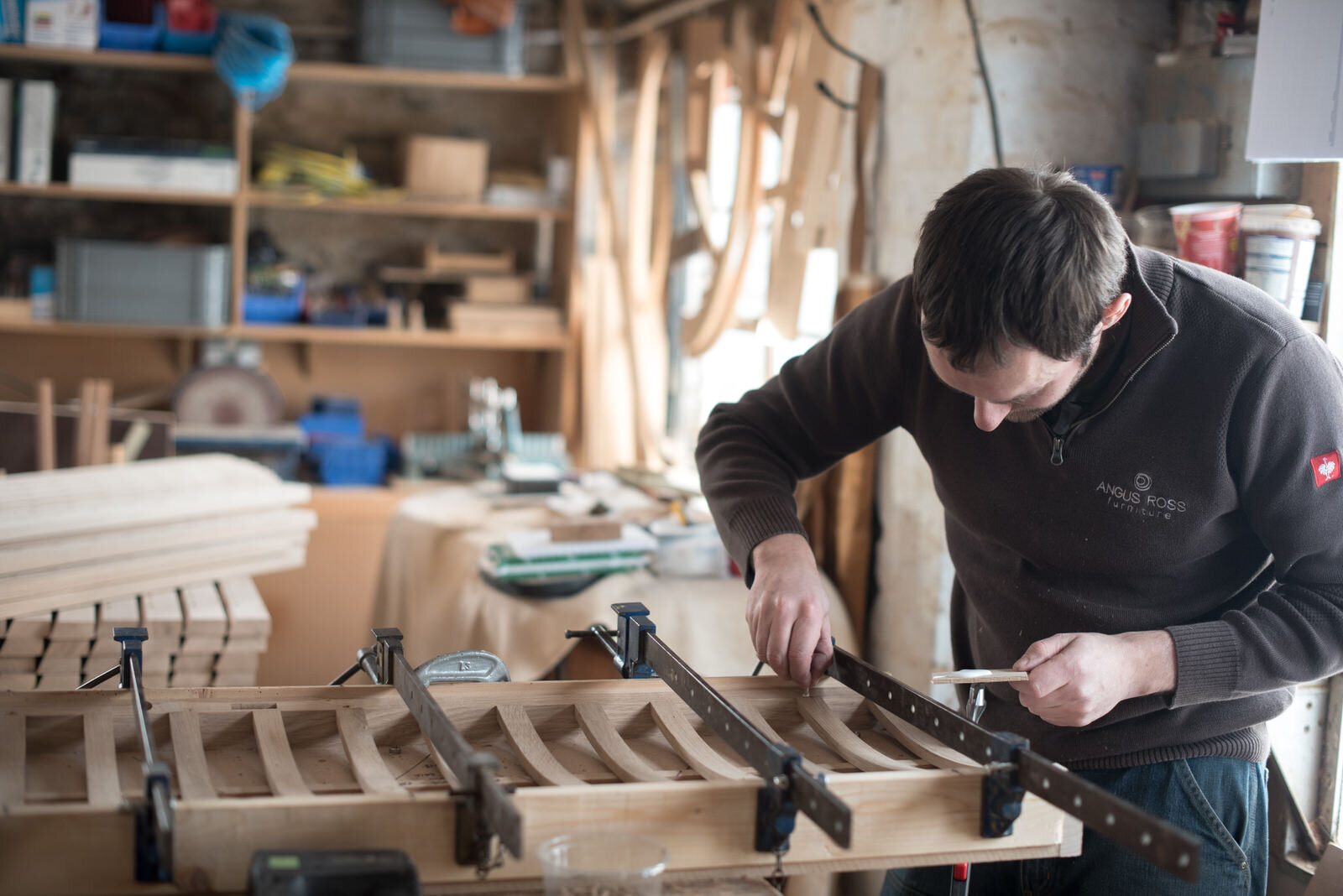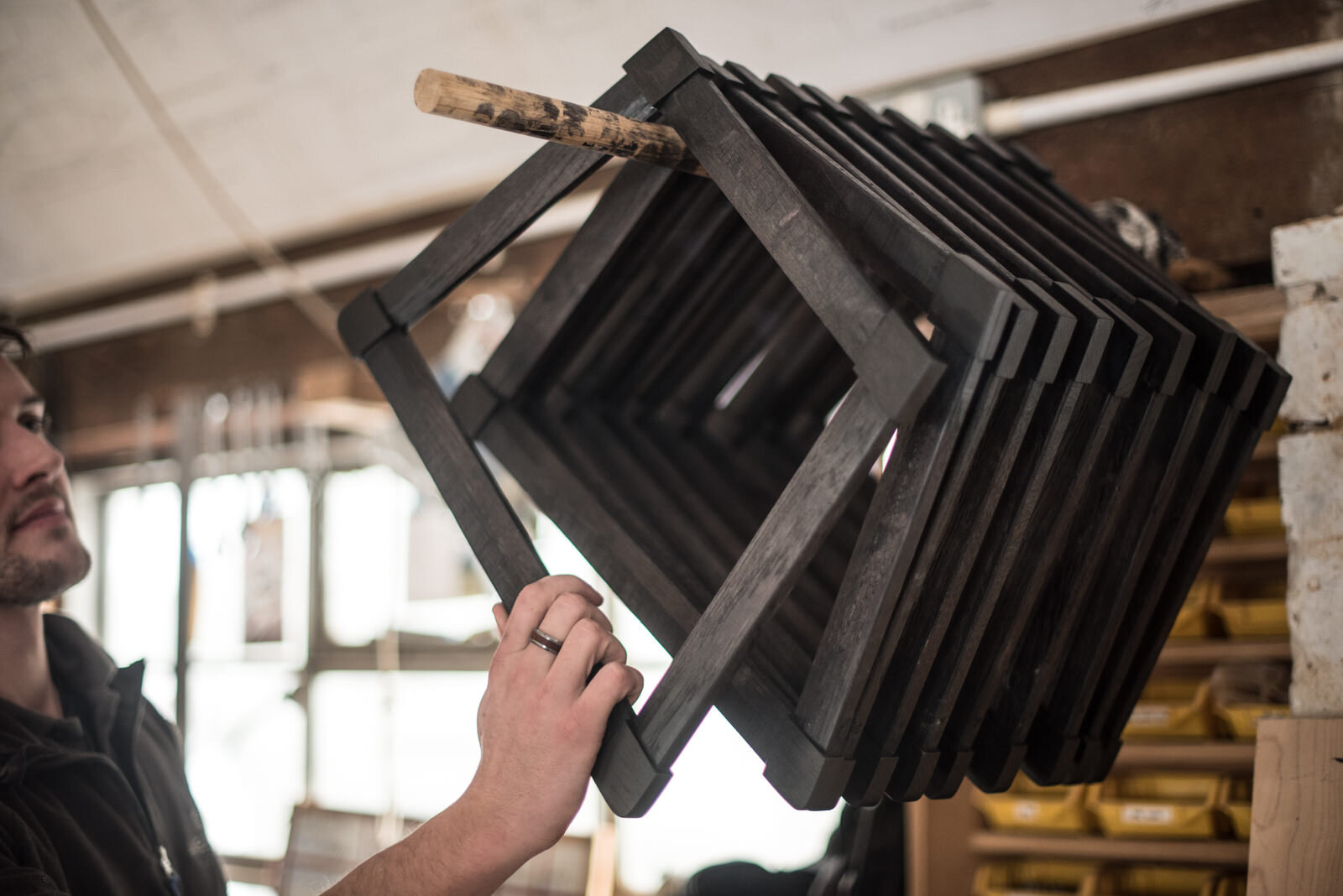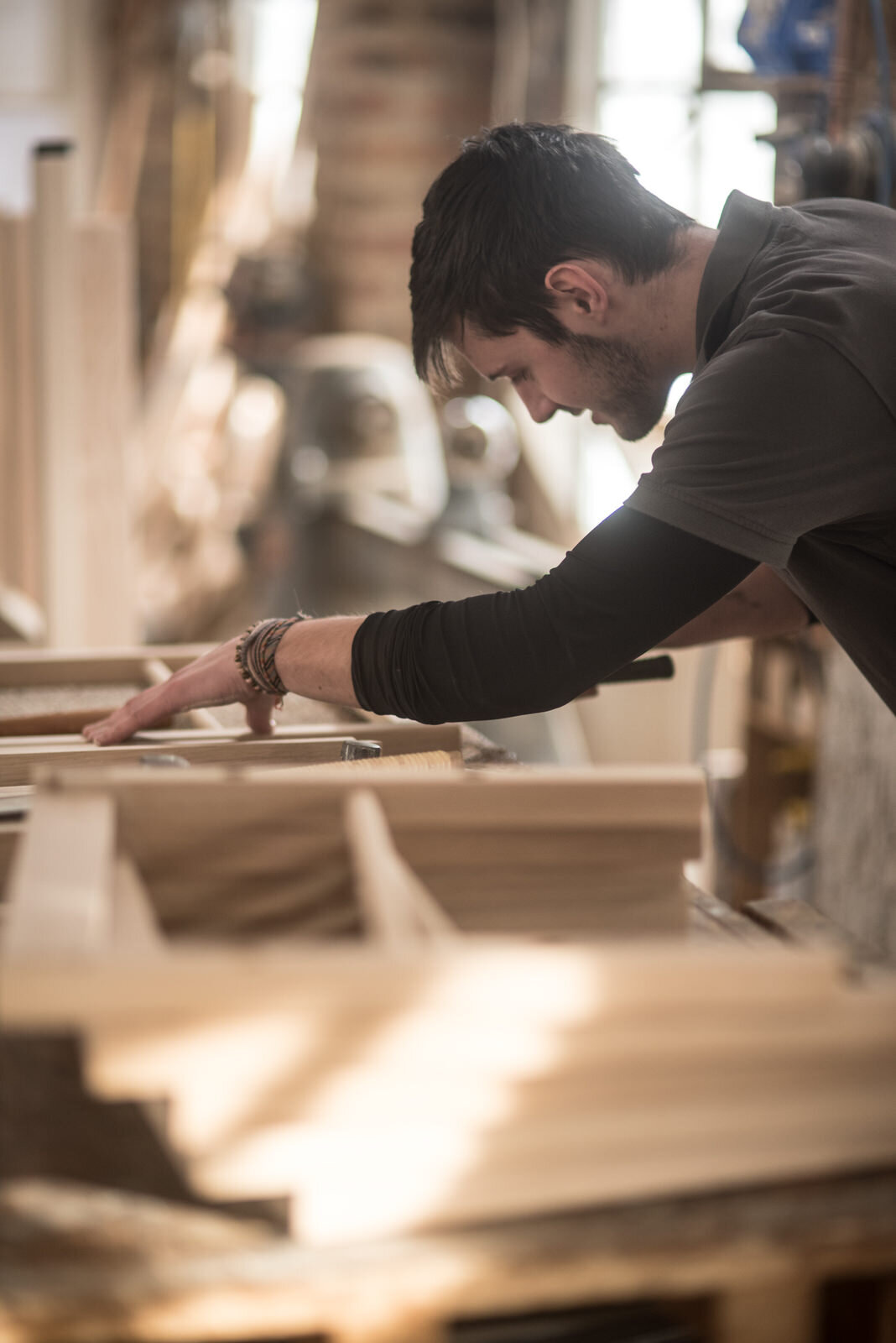Charles Rennie Mackintosh Ladder-back Chairs
Our furniture is always designed by Angus Ross however we made an exception when we were commissioned by the Willow Tearooms Trust to make 125 Charles Rennie Mackintosh Ladderback Chairs for the newly restored original Willow Tearoom on Sauchiehall Street, Glasgow. This building has international importance as the first building where Charles Rennie Mackintosh (along with his wife Margaret Macdonald ) designed the exterior and interior including; furniture, lighting, tableware and gesso panels. The Willow Tearooms Trust have overseen the meticulous restoration of the building back to its condition at the time of opening in 1903. It re-opened as “Mackintosh at the Willlow” in May 2018, as they had lost the right to use the name The Willow Tearoom .
The commission was a competitive tender and our knowledge of steam bending allowed us to invisibly strengthen the Ladderback chairs. Of the original 125 only a handful survive as the back rails were cut from solid wood and this way of achieving the curved shape was vulnerable to breaking. (Cheaper reproductions of ladder back chairs have straight back rails.) For the restoration of the tearoom, the chairs had to be exactly the same size as the originals and there were concerns about the ability of the chairs to withstand the increased size of visitors during the last century. To provide some perspective, at the time of opening many Glaswegian men were rejected from the British Army recruiting for the Boer War because their chest size was below 28”. People in Glasgow were generally much smaller a century ago and the tearoom now attracts an international audience of larger people.
We cut the rails for the chairs from solid oak and then steam-bent the rails to create the curve. Steam-bending means working with the grain, keeping the wood fibres intact, and manually pushing the intact wood fibres whilst the wood is boiling hot and malleable, to coax it into the desired curved shape. Once dry these are very strong components.
Steven working on the 3250 mortice and tenon joints for the chair backs (125 chairs x 13 ladder back rails x 2 sides)
Usually when making chairs with a drop-in seat, the chair would be made first and the drop-in seat made to fit afterwards. For this heritage project the seats have hand-twisted rush (a new skill for us) and as this process is so time consuming we had to make the seat-bases first. The chairs had to be millimetre perfect to ensure the drop-in rush seat-bases would fit.
Mike working on the chair fronts.
The chairs are made in Scottish oak and have a black oil and black wax finish. Our black finish is based on microscopic analysis of the finish of an original ladder back chair. We carefully built this up with a sprayed black stain, then hand-applied black wax and black oil. The lovely soft gloss finish is hard-wearing and allows the grain and texture of the timber to show. It is much more sympathetic than the thick glossy finish associated with Mackintosh as a result of numerous over-paintings with heavy black varnish.
The numbered edition of Ladderback Chairs is now continued and these are available to order in Made to Order and at Mackintosh at the Willow.
We also designed and made 40 tables for the upstairs and downstairs salon. The tearoom is now open as a social enterprise providing employment for young people needing support into employment. The images of the finished tearoom below featured in World of Interiors December 2018.
Ground floor tea salon of Mackintosh at the Willow.
Upstairs tea salon.
The official royal opening of Mackintosh at the Willow was in September 2018.


